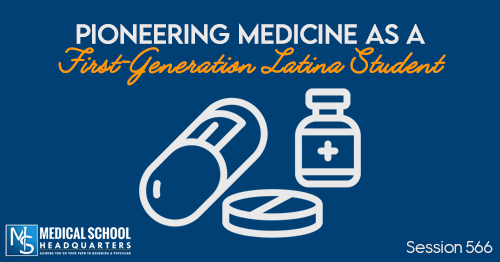Every year, U.S. News publishes a list of the top graduate and professional schools in the country, a list which contains the top-rated medical schools. The list contains 100 schools, ranked from 1 (the best) to 100. The formula for determining this list involves several factors: national funding for the school, the reputation of its affiliated hospitals, and other factors.
How important is the medical school name on my diploma?
Now, you may be asking yourself, “How important is the medical school name on my diploma in determining the rest of my career?” This is a good question, given that in certain professions, one’s choice of professional school greatly matters.
When becoming a lawyer, for example, where you go to law school really matters. It may even define your career. It will certainly greatly affect where you do your 1st-year internship, which will then greatly influence where you get your first job.
This is completely different from the world of medicine. In medicine, where you went to medical school only offers a small benefit in the residency application process. Medical students from the top schools might be slightly more competitive than students from lower-ranked schools, but if you have top grades, high USMLE scores, and excellent letters of recommendation, you have just as much of a shot at matching at a top residency program as students at the top schools.
In medicine, going to a prestigious school only offers a small benefit in the residency application process. Grades, Step scores, and letters of recommendation matter more.Click To TweetThe question undergraduates always have is “What are the best medical schools?” On newsstands each year, you can find the U.S. News report on the best medical schools in the country. These rankings are taken as gospel, and many students base their entire application on this list. My question is: Does this list really matter? Personally, I don’t think so. Let’s dissect the U.S. News approach to making the list.
[Related post: Top 10 Medical Schools, Ranked by Popularity—What a Joke]
How the U.S. News ranks best medical schools
The research starts with surveys sent to every fully accredited allopathic and osteopathic medical school. For the latest rankings, the total was 149 medical schools. Of the 149 med schools, there were 114 responses returned.
Here is how the responses are scored:
Peer Assessment Score:
Allopathic and osteopathic school deans, deans of academic affairs, and heads of internal medicine or the directors of admissions are asked to rate other schools on a scale of 1 to 5, with 5 being outstanding.
If you’re a premed reading this, you will learn through your journey of medical school and residency training that there is a focus on “Evidence-Based Medicine” today. There has been a shift from the old medicine thinking of “This is the way I was taught, so this is the way I’m going to do it,” to “What does the evidence show is the best way to proceed?” Evidence-based medicine allows for information to be objectively tested, reproduced, and evaluated before it is accepted.
Well, this “peer assessment score” is nothing more than old medicine thinking, a method of sorting which does not offer an objective sense of the best medical schools.
[Related episode: Are All U.S. Medical Schools Created Equal?]
Assessment score by residency directors
Similar to the peer assessment score, this score is a subjective rating based on a residency director’s small glimpse into a medical school program.
If a residency program has 5 spots each year, and those 5 spots are filled with applicants from 5 different medical schools, the director of that residency program has representation from 3.35% of all medical schools. And if you take that math a step further, you can say that those 5 interns represent only 1% of all the students from those 5 medical schools (assuming 100 students per class). There is no reasonable way to judge a medical school based on one student. Again, this score has no real value in ranking a medical school.
Research Dollars (used to rank schools for their research)
Total Research Activity
Finally, here is a score that can actually be measured and compared, apples to apples. But it still has no place in ranking a medical school! This score is based on the total numbers of dollars of all grants given to a medical school by the National Institutes of Health (NIH).
While I agree that research dollars are good for a program, they certainly have no role in the education of the medical student. When I was sitting in a classroom in medical school, my professors were not teaching me about the NIH-funded research in their labs. They were teaching me medical information derived from research that had already been published and peer reviewed, probably done at another school. Research dollars do not equal teaching quality, which is what should actually be ranked.
When it comes to comparing medical schools, research dollars do not imply teaching quality.Click To TweetAverage Research Activity per faculty member
Similar to the last score, this score is based on the number of dollars per full-time faculty member. Again, this is a quantifiable number that can be ranked and sorted against its peers, but it still doesn’t truly judge a medical school.
Primary Care rate (used to rank schools in primary care)
This may be the first score that I believe should contribute to the ranking of a medical school. This score is based on the percentage of M.D. and D.O. graduates entering a primary care field. The three primary care fields used are internal medicine, family medicine, and pediatrics.
This score is a valid rating of a school because it shows applicants, with evidence, how many graduates are going into a specific field. This score is not perfect, however, because it does NOT tell us how qualified those graduates are, just that they did match.
[Related post: Important Details About (Almost) Every Medical Specialty]
Student Selectivity: MCAT and GPA
The student selectivity score is based on the entering class mean MCAT and GPA scores, as well as the percentage of students that are accepted vs. the actual number of students that matriculated.
For some reason, the U.S. News weighs the MCAT and GPA differently if they are being used for the primary care ranking or the research ranking. The GPA ranking is weighted 0.045 for the primary care rankings vs 0.06 for research rankings. The MCAT is weighted 0.13 for research rankings and 0.0975 for the primary care rankings.
I do see some validity in judging a school based on the applicants and the students who matriculate, so I think that this is a valid part of ranking medical schools. That being said, I just don’t understand why there is a difference between research and primary care rankings.
Faculty Resources
This is the last score used in ranking the top medical schools. Again U.S. News chooses to rank research and primary care medical schools differently. I do not understand why the ratio of full-time faculty to medical students would make a different impact on the quality of a research-based model vs. the primary care model. I do agree that faculty-to-student ratios can have an impact on the quality of teaching, so I do think that this should be included in ranking the top medical schools.
Are these top medical school rankings valid?
So, as you can see, there are only five scores (primary care rate, MCAT and GPA scores, acceptance rate and faculty-to-student ratio) out of the nine that I believe have any relevance in ranking a medical school. In the end, where you go to medical school has a small effect on where you’ll match for residency and where you will work as an attending.
In the end, where you go to medical school has a small effect on where you'll match for residency and where you will work as an attending.Click To TweetThe USMLE Step exams and Comlex Levels are tests that help residency programs put everybody on a level playing field. Your Step 1 score is not scored on a curve based on where you went to medical school. The amount of effort you put into medical school will be the determining factor in where you match for residency.
Please don’t let the U.S. News rankings sway you from applying or not applying to a medical school based on where it ranks on their list, just because it received a few more dollars from the NIH.
Wherever you get into a best medical school, be happy, work hard, have fun, and work hard (yes, I said it twice!).
The amount of effort you put into medical school will be the determining factor in where you match for residency—not what school you attend.Click To TweetLinks and Other Resources:
- Check out my Premed Playbook series of books (available on Amazon).
- Related episode: Are All U.S. Medical Schools Created Equal?
- Related post: Top 10 Medical Schools, Ranked by Popularity—What a Joke
- Need MCAT Prep? Save on tutoring, classes, and full-length practice tests by using promo code “MSHQ” at Blueprint MCAT (formerly Next Step Test Prep)!







